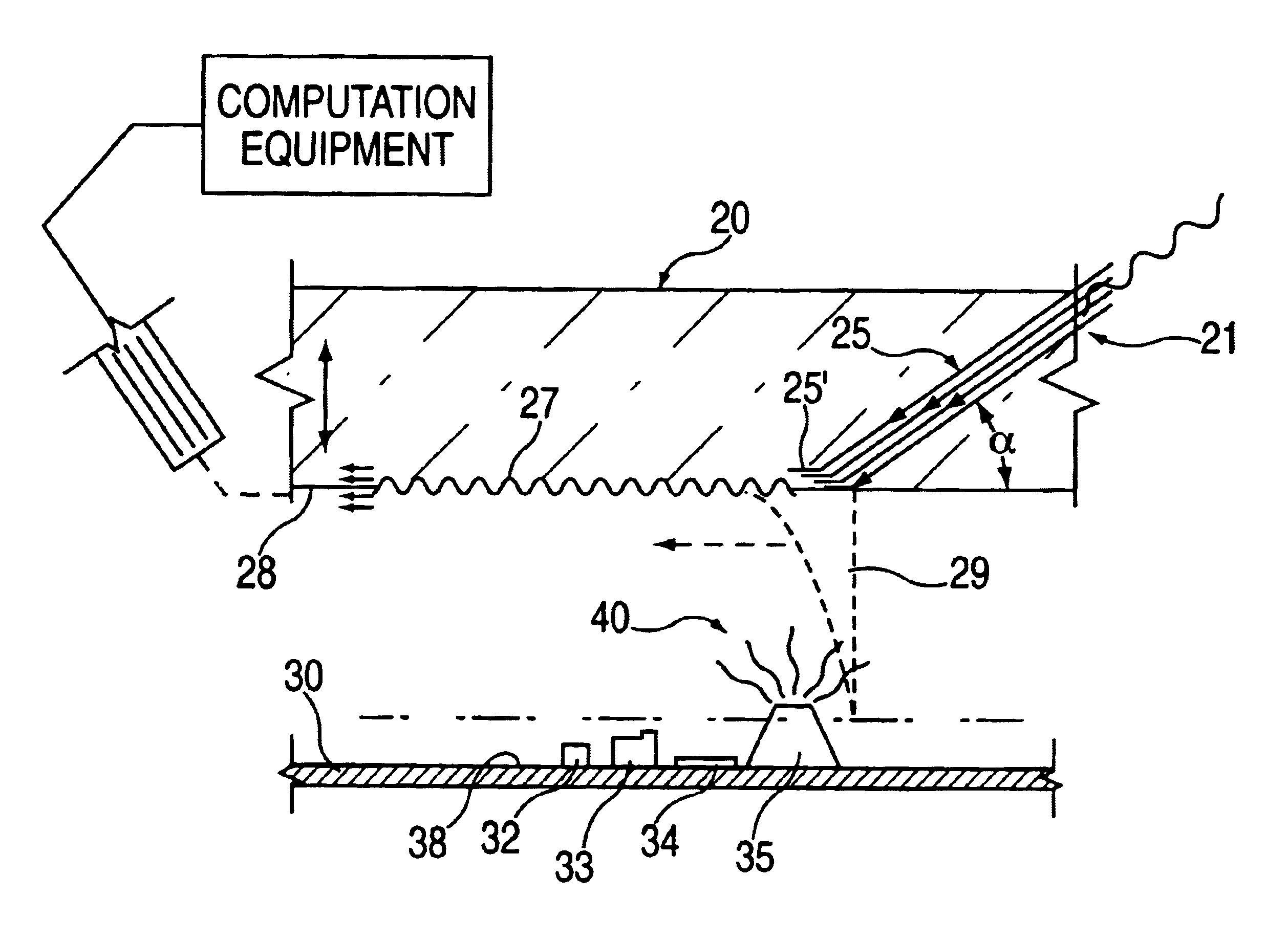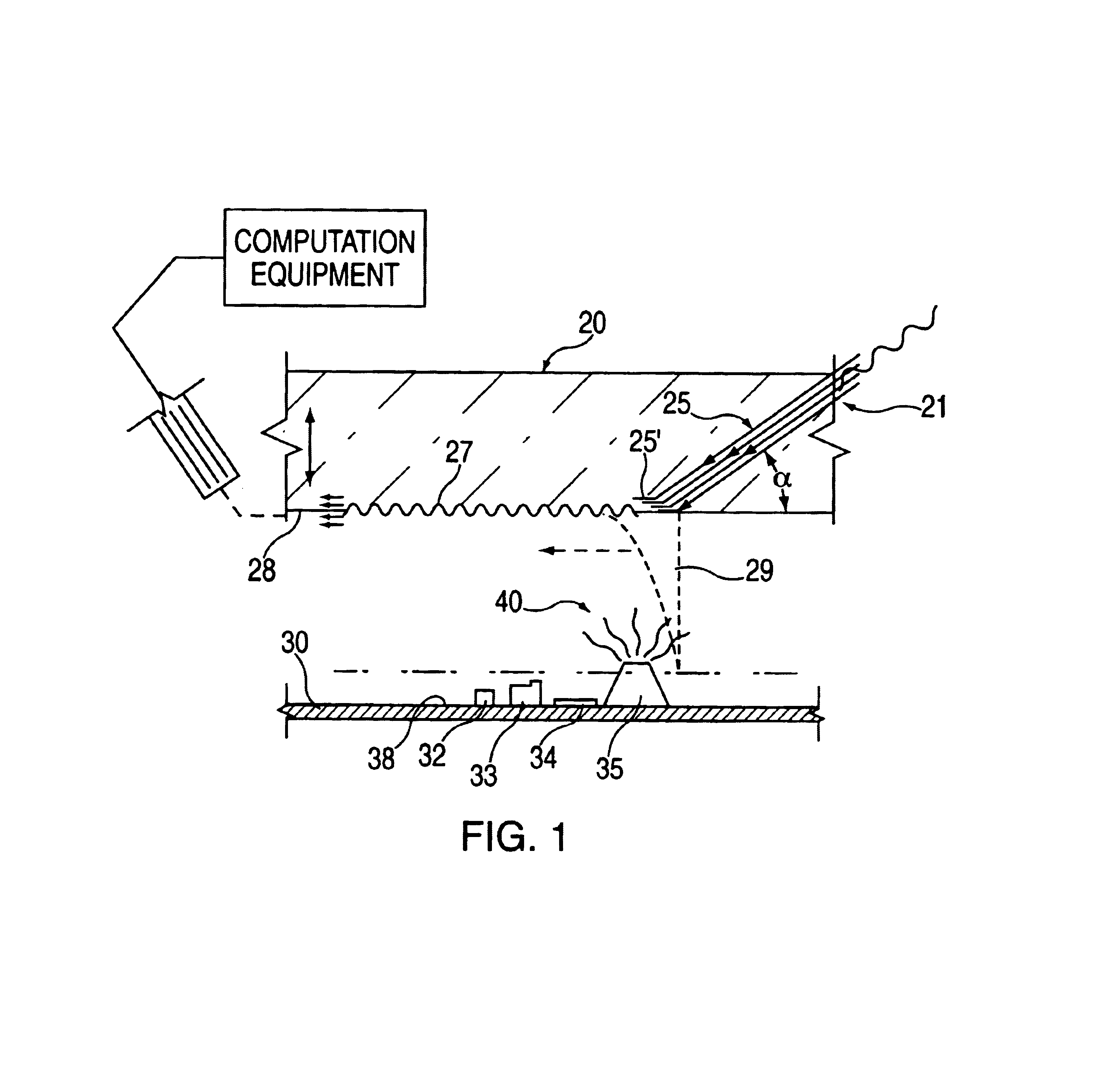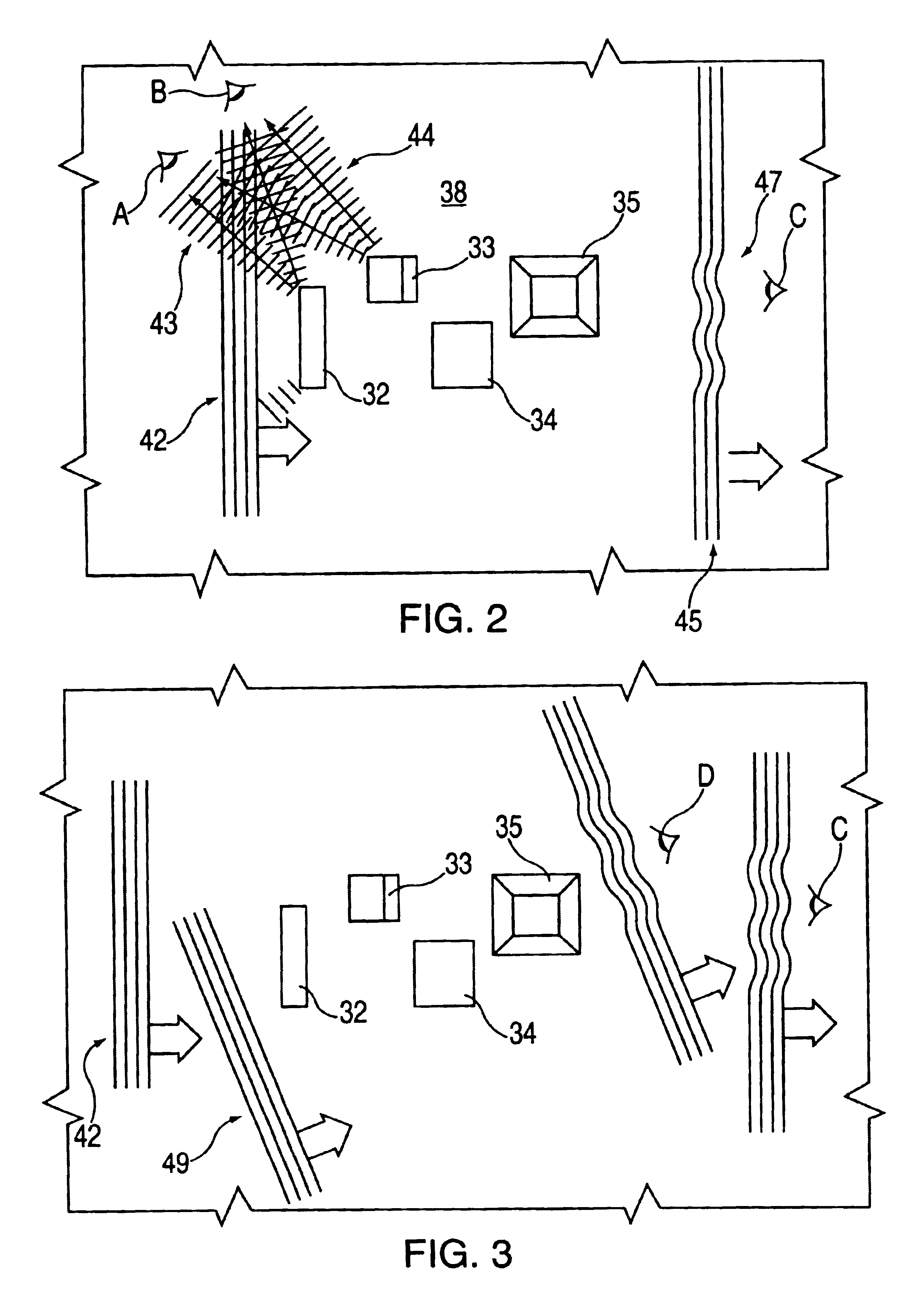Coherent evanescent wave imaging
a technology of evanescent wave and coherent wave, applied in the field of methods and apparatuses for observing the characteristics of nanostructures, can solve the problems of insufficient nanostructure characteristics, limit observation, and daunting difficulty in characterizing nanostructures based on observation
- Summary
- Abstract
- Description
- Claims
- Application Information
AI Technical Summary
Benefits of technology
Problems solved by technology
Method used
Image
Examples
Embodiment Construction
[0023]Turning to FIG. 1, a cross section of a portion of an instrument for detecting physical characteristics of nanostructures is diagrammatically illustrated for purpose of explanation. A surface wave is produced at the surface of a waveguide. The surface wave is an electromagnetic slow wave that does not travel in free space but is bound to a surface. The wave exists at the boundary between a medium (the waveguide) and the free space, air or other medium outside the waveguide boundary. Such a wave has associated with it an exponentially decaying tail located outward of the waveguide in the air or free space bounded by the surface of the guide. The free space portion of the surface wave thus created in the space proximate the waveguide's surface is termed an “evanescent wave.” The wave does not propagate away from the boundary, but it is detectable. It does not radiate, but an object placed in the wave will radiate. As graphically illustrated in FIG. 1, a waveguide 20 is irradiate...
PUM
| Property | Measurement | Unit |
|---|---|---|
| distances | aaaaa | aaaaa |
| distances | aaaaa | aaaaa |
| length | aaaaa | aaaaa |
Abstract
Description
Claims
Application Information
 Login to View More
Login to View More - R&D
- Intellectual Property
- Life Sciences
- Materials
- Tech Scout
- Unparalleled Data Quality
- Higher Quality Content
- 60% Fewer Hallucinations
Browse by: Latest US Patents, China's latest patents, Technical Efficacy Thesaurus, Application Domain, Technology Topic, Popular Technical Reports.
© 2025 PatSnap. All rights reserved.Legal|Privacy policy|Modern Slavery Act Transparency Statement|Sitemap|About US| Contact US: help@patsnap.com



